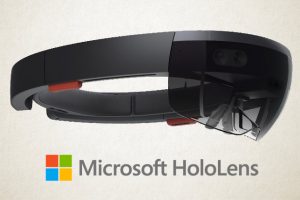(ThyBlackMan.com) Anyone remembers the Google Glass? It’s a piece of wearable tech—smart glasses—that allows for a number of immediate functions that your smartphone can do. You get it to do most functions by voice since you can’t very well just slip your finger behind the lens and press on the lens.
That’s how you get smudges and fingerprints on the lens and that’s…gross.
Now, there was a lot of hub bub about it back in 2013 and 2014 in the tech press about its commercial applications and with good reason. A piece of tech is only going to garner so much attention if it has a commercial use and is intended to be released to the buying public.
If it’s meant for the private sector or industrial use then no one really cares except for those heavily invested in tech news. While Google still develops the Google Glass, it has seen more use in industry and tech and never really penetrated the commercial market as many were expecting.
Personally, I was kind of excited about the Glass. It felt like we were getting closer and closer to that Blade Runner and Ghost in the Shell future. Neither of which are ideal futures but the technology was exciting.
Microsoft Improves Upon the HoloLens
I mention the Google Glass because Microsoft has been making improvements to its HoloLens smartglass. Unless you follow the tech conferences where Microsoft will almost always make its appearance, you probably missed out that the company has its own smartglass device.
The HoloLens does most of things Glass does and what is expected of smartglasses. Off the bat, it doesn’t come off as “Wow! This is cool!” since the smartglass never took off like smartphones and smartwatches. Man, did those ever take off once developers came up with their own fitness suites and implemented them. No, the smartglass never benefited from such a come up.
What caught my attention by Microsoft’s HoloLens are its applications. It has everyday applications but just like the Xbox, the HoloLens is all-in-one device—which also gaming applications. It’s just what Microsoft does. However, the ability to translate spoken language is massive.
Okay, That Seems Small
Actually, seems like “It’s 2019, this should’ve been implemented several years ago.” You would be correct! We should’ve been at the point where we can translate live speech but for Microsoft to finally get around to it is something of an achievement. At least for Microsoft considering all the pots it has its fingers in. What I like about this feature is that it will push others developing such technology to include it.
That’s a massive plus for tech and for making the world smaller through language. The language barrier is something that stops a lot of progress. With smartphones advancing each year, you would think it would’ve gotten smaller. Especially with some apps being compatible with smartphones up and down the price scale. An app like Google’s Translator Speak and Translate is one such app that should’ve done the job.
The problem with the HoloLens and its live translation is the availability of the device. It has a significant price barrier that will prevent it from being common place with most. Plus, no one really wants to walk around with obvious wearable tech. Like, this is a piece of headwear and privacy fears would be likely to flare up again. This is a feature that would be amazing for a smartwatch. That said, this is a step forward.
Staff Writer; M. Swift
This talented writer is also a podcast host, and comic book fan who loves all things old school. One may also find him on Twitter at; metalswift.

















Leave a Reply